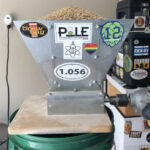Grand Theft Auto V remains a powerhouse in the gaming world, and modding takes the experience to another level, introducing exciting new content and customizations. However, diving into the world of GTA 5 mods isn’t always seamless. Players often encounter frustrating texture issues after installing modifications, which can significantly hinder gameplay. These problems range from low-resolution textures to textures not loading correctly, or even flickering and disappearing. If you’re facing these graphical glitches in your modded GTA 5, this guide will walk you through proven solutions to get your game looking its best again.
Understanding and Tackling GTA 5 Texture Problems from Mods
Texture issues in modded GTA 5 typically arise because mods, especially those that enhance visuals or add new vehicles and items, can be demanding on your system. High-definition (HD) mods, while visually appealing, increase file sizes and can strain your PC’s resources, potentially leading to conflicts or overloading your graphics processing capabilities. This is particularly true if you’re running numerous mods simultaneously. These resource conflicts can manifest as the texture problems you’re experiencing. Let’s explore effective fixes to address these issues.
Proven Solutions to Resolve Mod-Induced Texture Glitches
If you’re seeing texture problems after installing GTA 5 mods, here are several effective methods to troubleshoot and resolve these graphical issues:
1. Update Your Graphics Drivers
Outdated graphics drivers are a common culprit behind various game performance issues, including texture problems. Ensuring you have the latest drivers for your NVIDIA or AMD graphics card is a crucial first step. Driver updates often include optimizations and bug fixes that can directly improve game stability and visual rendering. Visit the official NVIDIA or AMD websites to download and install the most recent drivers for your specific graphics card model.
2. Optimize Your Mod Management
The sheer number of mods, or conflicts between them, can easily lead to texture issues. A strategic approach to mod management is essential:
- Selective Installation: Avoid installing every mod you find appealing at once. Install mods incrementally, testing your game after each installation to pinpoint any problematic mods.
- Mod Backups: Before installing any new mod, create a backup of your game files. This allows you to quickly revert to a stable game state if a mod introduces errors.
- Identify Problematic Mods: If you suspect a particular mod is causing issues, uninstall it and see if the texture problems disappear. You can systematically test mods by installing them one by one and launching the game each time to identify the exact mod causing the conflict.
3. Adjust GTA 5 Process Priority
Setting the GTA 5 process priority to “Above normal” can sometimes improve performance and reduce texture loading issues. This adjustment tells your operating system to allocate more resources to the game, potentially resolving resource contention problems that contribute to texture glitches.
To do this:
- Launch GTA 5.
- Press
Ctrl + Shift + Escto open Task Manager. - Go to the “Details” tab.
- Find
GTA5.exein the list of processes. - Right-click on
GTA5.exe, go to “Set priority,” and choose “Above normal.”
It’s generally recommended to use “Above normal” rather than “High” priority, as “High” priority can sometimes negatively impact system stability across all processors.
4. Utilize a Lag and Texture Fix Script
Several community-created scripts are designed to address common GTA 5 performance issues, including texture loading problems. One such script, available on GTA5-mods.com, aims to optimize game performance by adjusting process priorities and clearing unnecessary background processes.
https://www.gta5-mods.com/misc/lag-world-not-loading-fix-simple-easy
This script typically requires you to run it after launching GTA 5 and then press a designated key (often Spacebar) to activate its optimizations. Such scripts can streamline resource allocation and potentially mitigate texture-related problems.
5. Re-evaluate High Definition (HD) Mods
While HD mods can enhance visual fidelity, they are also more demanding on your system. If you’re experiencing texture issues, consider uninstalling or reducing the number of HD mods you have installed. Prioritize game stability and smooth performance over ultra-high-resolution textures, especially if your system is struggling.
6. Optimize In-Game Graphics Settings
Lowering your in-game graphics settings can significantly reduce the strain on your system and potentially resolve texture problems. Pay particular attention to settings like:
- Extended Distance Scaling (EDS): This setting is particularly resource-intensive. Reducing EDS can significantly improve performance and texture loading, especially at long distances.
- Texture Quality: While counterintuitive if you’re experiencing texture issues, sometimes lowering texture quality can force the game to properly load textures, ironically resolving glitches caused by overload. Experiment with different texture quality settings to find a balance.
- Shadow Quality, Reflection Quality, and other advanced graphics options: Reducing these settings can free up resources and improve overall game performance, indirectly helping with texture loading.
Maintaining a Stable and Visually Appealing Modded Game
Resolving texture issues is often about finding the right balance between visual enhancements and system performance. By systematically addressing potential causes like outdated drivers, mod conflicts, and demanding graphics settings, you can significantly improve your GTA 5 modding experience. Remember to always test changes incrementally and monitor your game’s performance to ensure a stable and visually enjoyable gameplay.

